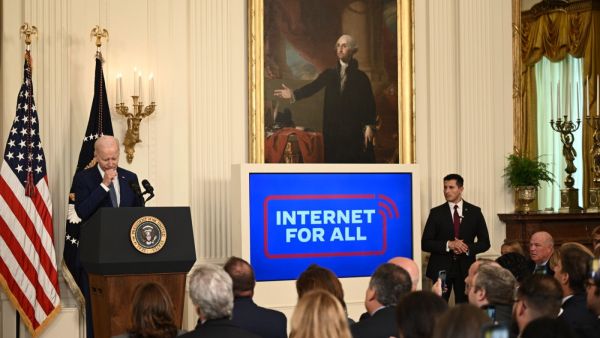ALBAWABA – The United States (US)’s White House announced the allocation of $42 billion, on Monday, to make access to high-speed broadband universal by 2030.
By universal, the White House means nationwide, as the allocation is divvied up among the nation’s 50 states and territories, Reuters reported.
The Broadband Equity Access and Deployment Program was authorized in 2021, totalling $1 trillion. It is part of the infrastructure law US President Joe Biden championed. The implementation of the program is based on a newly released Federal Communications Commission coverage map, which details gaps in access.
"It's the biggest investment in high-speed internet ever. Because for today's economy to work for everyone, internet access is just as important as electricity, or water, or other basic services," Biden said in a White House address on Monday.
Sub-allocations range from $27 million to territories like the US Virgin Islands to over $3.3 billion for Texas, with every state receiving a minimum of $107 million, according to Reuters.
President Biden is laying the foundation of an economic vision dubbed “Bidenomics” in a memo sent on Monday from senior advisers Anita Dunn and Mike Donilon to congressional Democrats and other allies, as carried by Reuters.

The memo highlighted Biden’s upcoming speech, on Wednesday in Chicago, explaining his economic approach.
According to Reuters, all of this is part of an early publicity campaign highlighting how Biden’s efforts affect the average American.
The 2024 election will in part be seen as a referendum on Biden's handing of the economy.
Job creation and low unemployment are the positives while elevated inflation and the knock-on effects of higher interest rates have stoked fears of a recession.
Some 54 percent of Americans disapprove of how Biden is handing his job, compared to 35 percent who do approve of his stewardship of the economy, according to a Reuters/Ipsos poll in June.
Democrats lost control of the House of Representatives in the 2022 midterm elections.
It is estimated that some 8.5 million locations in the US lack access to broadband internet.
Low-population rural communities in the US generally do not have access to the internet, because broadband companies were reluctant to invest in small markets. Low-population areas do not offer a lot of subscribers for these companies to break even, let alone profit from such investments.
The issue came to light when COVID-19 lockdowns forced students into online schooling, Reuters said.
Individual states and territories will be submitting initial plans later in the year, against which they will be unlocking 20 percent of the funding. Upon finalization of the plan, in 2024-2025, the remnant of the funds will be released.







